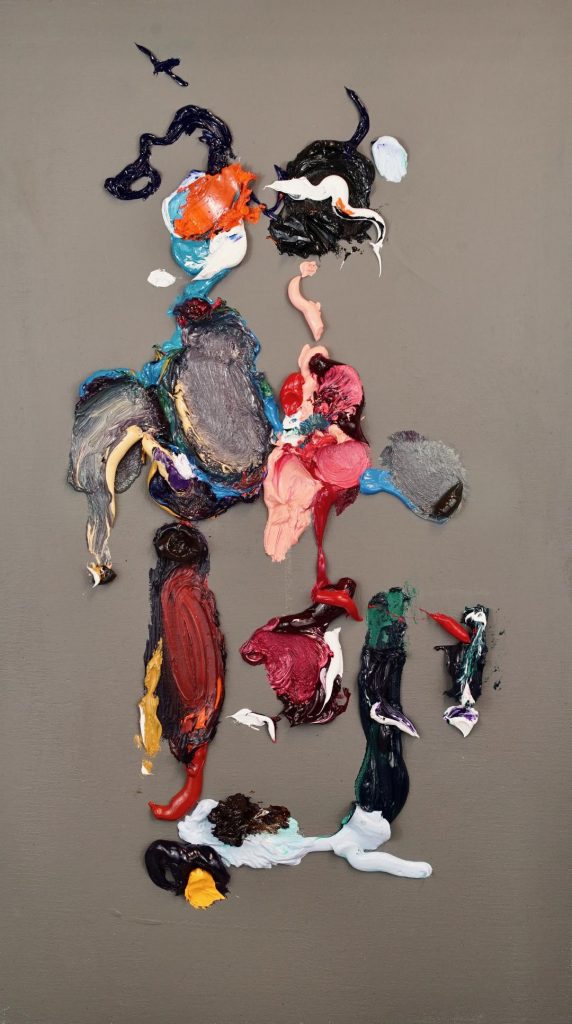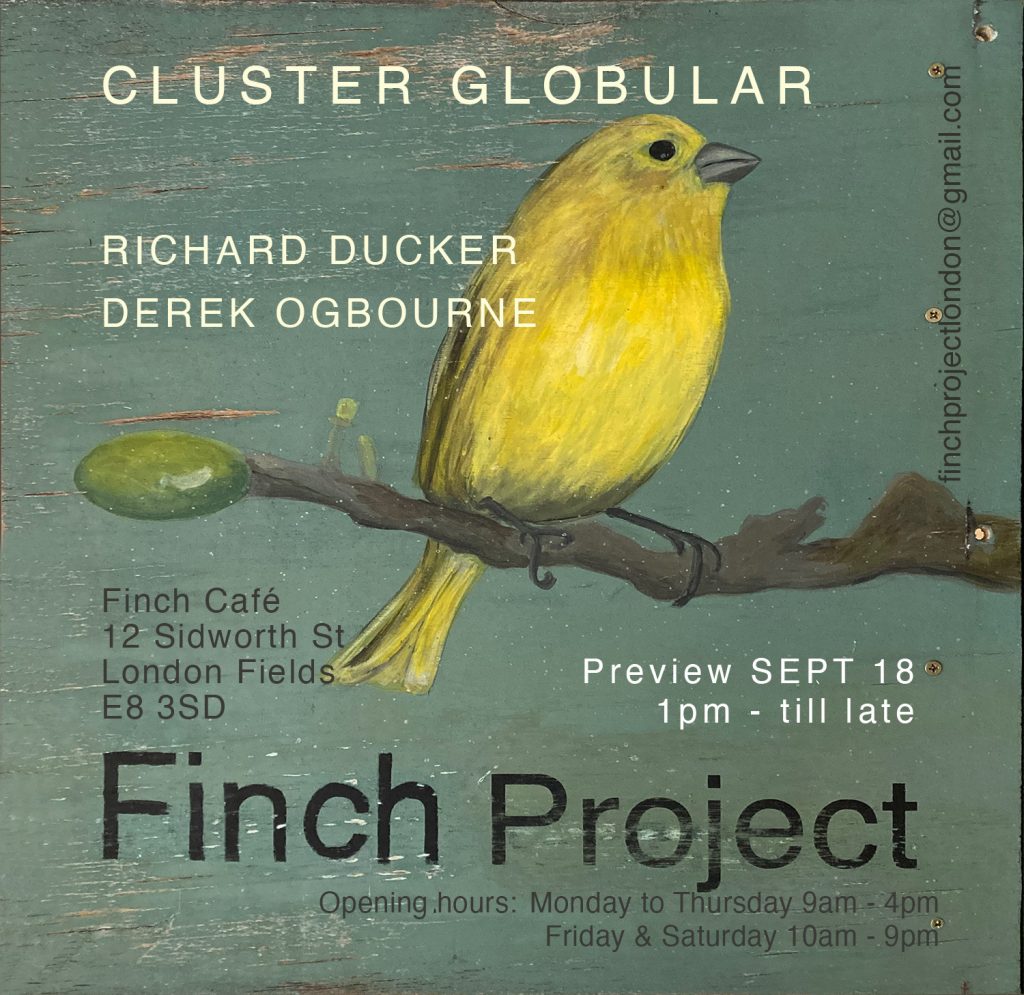
Derek Ogbourne is a painter whose work I’ve enjoyed for quite some time. I love the vitality in his painting, the paint seems to have a mind of its own, it feels ‘animal’ like some of Francis Bacon’s work, yet the painter is in control. This isn’t the ‘slap it on and see what it does school’.I asked him –
Derek – how do you respond to that?
DO. You are right, what appears to be wild and uncontrolled blobs and splodges of paint were applied in controlled sleight of hand, much like a signature is performed. Quite different from my earlier paintings, the majority of these fifty or so works in this series were created in one sitting, with almost no edits, or changes, done on grey grounds during the peak of the lockdown for around 2 months. Then I stopped painting.
JW. I especially like the series with the flat grey backgrounds. I know they were painted before ‘the great confinement’, but during some bleak periods, the vitality of those colours and organic forms were a joy. Were these consciously done as a smack on the nose for depression?
DO. Lockdown and being furloughed, was an antidote to the anxiety of the Covid nightmare, allowing me the time to flourish uninterrupted in isolation. A holiday from the Art world was also a welcome bonus.It wasn’t depression that spurred my production of these paintings but desire to return to painting in my new, and more pleasant studio after a few years of feeling uprooted with me moving 6 times in as many years.
JW. Colour tension! Warm against cool colours. Is this a science or an art?
DO. It is art not science but I do understand that the way colour works emotionally, physically and symbolically can be seen as a science. I use warm and cold colours to set things off, but more so also the use of the complementaries, and black grey contrast. Rembrandt’s use of grey as a ground was an influence. Towards the end of the series I ditched my brushes and squeezed the paint directly from the tubes and used my fingers and hands to swipe and manipulate the colour, the paint becoming increasingly thicker and uniformly impasto.Up to about the fortieth painting my first paint marks were always pink and fleshy, like open wounds, then the paintings would evolve using a quite basic palette of colours. The primaries, secondaries, earth as earth, black, white and the trick of the use of grey – a mixture of the primaries and white as a ground – that I knew would make the colours sing.

